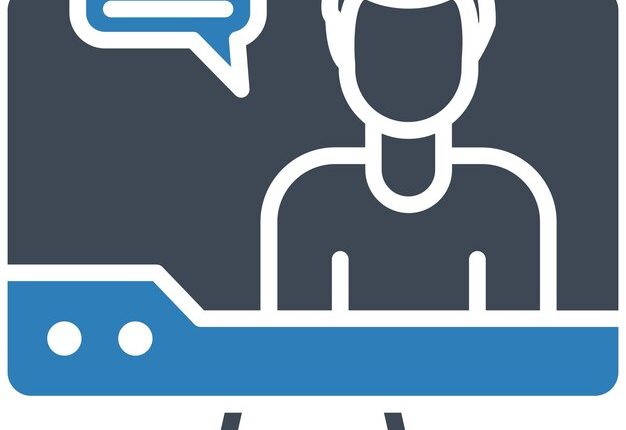Chronic diseases like type 2 diabetes (T2D) pose significant challenges not only to those diagnosed but also to the healthcare systems that support them. In a bid to enhance disease management and improve patient outcomes, innovative interventions are continually being tested. A notable example of such an initiative is the New York City Care Calls, a prospective randomized controlled trial aimed at evaluating the effectiveness of a Telephonic Self-Management Support (T-SMS) program for adults with T2D.
The research, conducted over a 12-month period, involved 812 adult participants, predominantly Latino, who were already grappling with managing their diabetes (as evidenced by an average A1C level of 9.3). These participants were divided into two groups: one received the T-SMS, and the other, a form of enhanced usual care (EUC). This study, meticulously organized by Jeffrey S. Gonzalez and his team, sought to observe changes in key health metrics such as A1C levels, blood pressure, and body mass index. Additionally, it assessed more subjective aspects of health like depressive symptoms, diabetes distress, medication adherence, and self-management activities.
The results of the trial, though intriguing, suggested that while there were improvements in diabetes management in both the T-SMS and the EUC groups, there was no significant difference between the two, raising questions about the added value of the T-SMS intervention over EUC. This study not only shines a light on the complexities of managing type 2 diabetes but also prompts a broader discussion on the most effective modalities for patient education and support.
The prevalence and impact of chronic diseases like type 2 diabetes (T2D) have warranted heightened research and innovation regarding effective management strategies. T2D, a largely preventable and manageable condition through lifestyle changes, remains a significant public health challenge globally and especially in urban centers like New York City. The demographic of New York, with its large Latino population, often presents with higher incidences of T2D, compounded by social and economic factors that can affect disease management outcomes.
Given the complexity of T2D management—which involves continuous medical care, patient education, and significant lifestyle alterations—traditional care models are often insufficient. These models typically rely on periodic clinical visits which may not adequately address the frequent support and detailed guidance needed by patients. This gap in care necessitates more dynamic and accessible interventions, leading to the exploration of telephonic and digital management programs as promising alternatives.
Telephonic Self-Management Support (T-SMS) has emerged as a potential tool in this regard. T-SMS programs utilize regular telephone contact between healthcare providers and patients to offer counseling, education, and motivational support. These programs aim to enhance patient engagement, improve management of the condition, and ultimately lead to better clinical outcomes. They are built on the premise that increased regular contact can help modify behaviors through ongoing support and accountability mechanisms.
Prior research has provided mixed insights into the efficacy of T-SMS programs. Some studies suggest that such interventions can positively affect outcomes by improving adherence to medication and encouraging lifestyle modifications. Others indicate minimal impact when compared to enhanced usual care (EUC), which may also include regular follow-ups and additional health education.
In the case of the New York City Care Calls study, the selection of a predominantly Latino population, known to have higher vulnerability to T2D and complications associated with it, provided a focused context to assess the effectiveness of T-SMS more specifically. This group’s cultural, economic, and social nuances are critical in understanding how health interventions can be tailored effectively within diverse populations.
The Enhanced Usual Care (EUC) in this trial likely incorporated elements that are above standard care, potentially including more frequent in-person or telephonic consultations and additional educational resources. This comparison aims to delineate whether T-SMS adds value over and above a more interactive than usual care approach.
Furthermore, the study’s comprehensive evaluation of both objective health metrics (like A1C levels, blood pressure, and BMI) and subjective health aspects (like depressive symptoms and diabetes distress) acknowledges the multifaceted nature of T2D management. These outcomes are vital for a holistic view of patient health and the wider impacts of management strategies.
In sum, the New York City Care Calls trial serves as a crucial piece of the ongoing puzzle concerning effective diabetes management. Exploring how telephonic interventions can or cannot improve patient outcomes not only informs clinical practices but also presents significant implications for health policy and resource allocation within diverse urban populations. This research, by probing both the tangible and intangible aspects of disease management, underscores the complexities involved in tailoring interventions that are both effective and culturally appropriate.
To rigorously evaluate the effectiveness of the Telephonic Self-Management Support (T-SMS) program compared to Enhanced Usual Care (EUC) in managing type 2 diabetes among a primarily Latino adult population, a detailed methodology was devised by Jeffrey S. Gonzalez and his team for the New York City Care Calls study. This section will outline the participant selection, intervention procedures, comparison group details, data collection methods, and statistical analysis employed in the trial.
### Participant Selection
The study recruited 812 adults diagnosed with type 2 diabetes. Eligibility criteria included an A1C level of at least 7.5%, indicating suboptimal glucose control. The participants predominantly comprised Latino individuals residing in New York City, reflecting the demographic with heightened vulnerability to T2D complications due to socio-economic and cultural factors. All participants provided informed consent before participating in the study.
### Intervention Group (T-SMS)
Participants in this group received regular telephonic support from trained healthcare professionals, including registered nurses and certified diabetes educators. The frequency of calls was determined based on the initial assessment of the participant’s self-management skills and A1C levels, generally ranging from weekly to monthly. During these calls, the professionals provided personalized advice on medication adherence, dietary management, physical activity, glucose monitoring, and coping mechanisms. The T-SMS program also included goal setting and motivational interviewing techniques to enhance participant engagement and self-efficacy.
### Comparison Group (EUC)
The Enhanced Usual Care group participants received a level of care that, while still following standard diabetes management protocols, included additional elements such as more frequent follow-ups and access to educational materials. The follow-ups occurred every three months and were conducted via telephone by a healthcare provider, focusing mainly on reviewing the participant’s health status and reinforcing general diabetes education provided during usual care visits.
### Data Collection
Data were collected at baseline, six months, and twelve months, encompassing both clinical outcomes and self-reported measures. Clinical outcomes included A1C levels, blood pressure, and body mass index (BMI), measured during visits conducted by health professionals who were blinded to group assignments. Self-reported measures were collected through structured interviews and questionnaires that evaluated depressive symptoms, diabetes distress, medication adherence, and self-management activities, providing insight into the psychological and behavioral aspects of diabetes management.
### Statistical Analysis
The primary outcome of the study was the change in A1C levels from baseline to twelve months. Secondary outcomes included changes in blood pressure, BMI, depressive symptoms, diabetes distress, and self-management practices. Data were analyzed using an intent-to-treat approach, wherein all participants were included in the analysis according to their original group assignment irrespective of protocol adherence. Mixed-effects models were used to account for repeated measurements on the same individuals and adjust for baseline covariates. These models helped in understanding the impact of the interventions over time.
The study also employed subgroup analyses to examine differential effects of the intervention among participants with varying levels of baseline A1C, which provided insights into whether those with poorer initial control experienced more significant benefits from the T-SMS.
This robust methodological framework ensured a comprehensive assessment of the T-SMS program’s efficacy, thereby providing valuable insights into the potential of telephonic interventions in enhancing diabetes management among high-risk urban populations.
### Key Findings and Results
The findings of the New York City Care Calls trial yielded several insightful conclusions about the management of type 2 diabetes through telephonic self-management support (T-SMS) compared to enhanced usual care (EUC). Both groups showed statistically significant improvements in several diabetes-related health outcomes over the 12-month study period, signaling positive changes in the management strategies employed. However, there were no significant differences between the T-SMS and EUC groups in the primary outcome of A1C reduction.
#### 1. **A1C Levels**
A key indicator of glucose control, the A1C levels, decreased in both groups, suggesting that both intervention strategies positively influenced metabolic control. Nonetheless, the difference between the T-SMS and the EUC groups was not statistically significant. At the end of the trial, the A1C levels showed an average reduction close to 0.5% in both groups. This result suggests that while the T-SMS program provided effective support, the enhanced elements of the EUC (such as more frequent follow-ups and additional educational materials) may have similarly increased its efficacy.
#### 2. **Blood Pressure and BMI**
Improvements were observed in both systolic and diastolic blood pressure across the groups, with no significant difference between the T-SMS and EUC groups. The body mass index (BMI) changes were minimal and showed no significant divergence between the interventions. These outcomes underscore the potential for regular patient engagement—whether telephonic or via enhanced usual care—to benefit broader cardiovascular risk factors.
#### 3. **Depressive Symptoms and Diabetes Distress**
In terms of psychological well-being, both groups reported reductions in depressive symptoms and diabetes distress, again with no significant differences between the groups. This finding highlights the importance of regular, supportive patient-provider interactions, which can play a vital role in managing the psychological aspects associated with chronic disease management.
#### 4. **Medication Adherence and Self-Management Activities**
There was a slight increase in self-reported medication adherence and engagement in diabetes self-management activities in both groups. Participants who had regular support (whether through T-SMS or EUC) tended to report better adherence to medication regimens and more consistent self-management behaviors, though these improvements were not significantly different between the groups.
### Interpretation of Results and Implications for Practice
The lack of significant differences between the T-SMS and EUC groups calls into question the added value of T-SMS over an already enhanced standard of care. This suggests that the key factor in improving diabetes outcomes might be the increased frequency and quality of interaction with healthcare providers, regardless of the medium used.
Healthcare providers and policymakers should consider these results when designing and implementing intervention programs for diabetes management. It appears that ensuring frequent, quality interaction between patients and providers, along with providing tailored educational resources and follow-ups, could be just as effective as more specialized telephonic interventions.
### Future Directions
The study highlights the need for further research to dissect the elements that contribute most effectively to improved health outcomes in chronic disease management. Future studies could explore the cost-effectiveness of these interventions or assess long-term outcomes beyond the 12-month period. Additionally, examining these approaches in different populations and settings could unveil more about their generalizability and potential adjustments needed to maximize efficacy across diverse groups.
In conclusion, while the New York City Care Calls trial identified no significant added benefit of T-SMS over EUC, it reinforced the effectiveness of regular, enhanced care interactions in managing type 2 diabetes, providing valuable insights for optimizing chronic disease management strategies.
### Future Directions and Final Thoughts
The findings from the New York City Care Calls trial highlight significant areas for future research and practical considerations for managing chronic diseases like type 2 diabetes. While the trial demonstrated improvements in diabetes management with both T-SMS and enhanced usual care, the lack of significant differences between the two interventions suggests that the core components of effective management may lie in the consistency and quality of care, regardless of delivery method.
#### Expanding Research Scope
Future trials should consider longer follow-up periods to assess the sustainability and long-term impact of telephonic and enhanced care interventions. Additionally, expanding these studies to include diverse populations beyond the primarily Latino cohort examined here could provide deeper insights into cultural and socio-economic factors influencing the management of T2D. By understanding these nuances, healthcare providers can tailor interventions to be culturally sensitive and more effective across different demographic groups.
#### Technological Integration and Personalization
With the rise of digital health technologies, incorporating more sophisticated tools such as mobile apps or wearable devices could be an exciting frontier. These technologies offer real-time data monitoring and more personalized feedback to patients, potentially enhancing self-management practices further. Research into the integration of these technologies with human support elements could yield interesting results regarding patient engagement and outcomes.
#### Economic Analysis
It is also crucial to conduct cost-effectiveness analyses of T-SMS compared to enhanced usual care. This economic perspective would help policymakers and healthcare providers determine the most efficient allocation of resources, especially in underfunded urban healthcare systems where maximizing the impact of every dollar spent is critical.
#### Quality of Interaction
The findings suggest that the quality and frequency of interactions with healthcare providers are vital. Future research should explore what aspects of these interactions are most beneficial. Is it the emotional support, the specific educational content, or the accountability factor that makes the most significant difference? Understanding this could help refine patient-care protocols to maximize efficacy.
#### Policy and Implementation
From a policy perspective, these insights call for the adaptation of healthcare regulations and reimbursement models to support innovative care delivery methods that prove effective. This may include policies that promote regular patient-provider engagement and support the use of telehealth as a legitimate and potentially equal alternative to traditional in-person care modalities.
### Concluding Thoughts
The New York City Care Calls trial underscores the complexity of managing chronic diseases such as type 2 diabetes and the nuances involved in effective patient education and support mechanisms. While the study did not find significant advantages of T-SMS over enhanced usual care, it reinforced the importance of regular, quality interactions between patients and healthcare providers.
Healthcare systems aiming to optimize diabetes management might focus on enhancing the interactive quality of care provided, irrespective of the medium. This shift could lead to significant improvements in patient outcomes and overall health system efficiency. Moving forward, the healthcare community must remain open to innovations and continue to rigorously evaluate their impact, ensuring that all patients receive the best possible care tailored to their specific needs.









